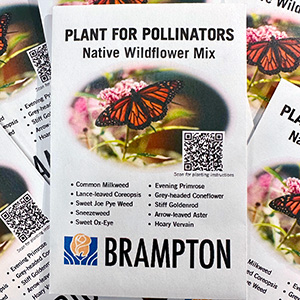How to Plant Pollinator Seeds: A Step-by-Step Guide
Whether you grabbed our Pollinator Seed Mix or another mix, follow these instructions to effectively plant your seeds for maximum blooms!

Step 1: Choose the Right Planting Time
- The ideal time to plant pollinator seeds is in the spring, typically after the last frost has passed. This helps prevent frost damage to newly germinated seeds.
- Avoid planting seeds in the summer, as drought conditions can hinder growth. If you do plant in summer, ensure irrigation is available.
- Planting in the spring allows the roots of new native plants to establish deeper in the soil, which helps them access moisture.
- You can also plant in the fall between October and November if desired.
Step 2: Prepare the Soil for Planting
- Clear the planting area of weeds and invasive species to give your seeds the best chance of success.
- If you can, prepare your soil, here are some ways to do so:
- Removing sod and tilling the soil. Though effective, this method can be labor-intensive.
- Using solarization by covering the area with black plastic for a year to kill weeds and other plants. Follow this by tilling the soil.
Step 3: Select a Suitable Site
- Ensure the site has good topsoil, which is vital for plant growth. Consider adding soil amendments like compost or manure to enrich the soil and improve moisture retention.
Step 4: Broadcast the Seeds
- Hand-broadcast the seeds as evenly as possible. You may wish to practice this technique before planting.
- To improve distribution, mix one part seed with eight parts dry sand.
- After scattering the seeds, ensure they make contact with the soil by walking over the area or using a roller.
Step 5: Consider Irrigation
- Proper timing of site preparation and seed broadcasting may eliminate the need for irrigation.
- However, climate change and drought periods may require irrigation to establish native plants.
- Water the planted area if natural rainfall is insufficient, but be cautious of overwatering, which can lead to erosion and seed displacement.
Step 6: Maintain Your Meadow or Garden
- Familiarize yourself with the species you've planted and use a wildflower identification guide to distinguish between wildflowers and weeds.
- Be patient as you learn to identify native species and remove weeds and invasive plants before they spread seeds.
- Over time, native plants will stabilize and dominate the area, enhancing the ecosystem for pollinators.
By following these steps, you'll be on your way to creating a thriving habitat for pollinators and enjoying the beauty of native wildflowers and grasses in your meadow or garden.
